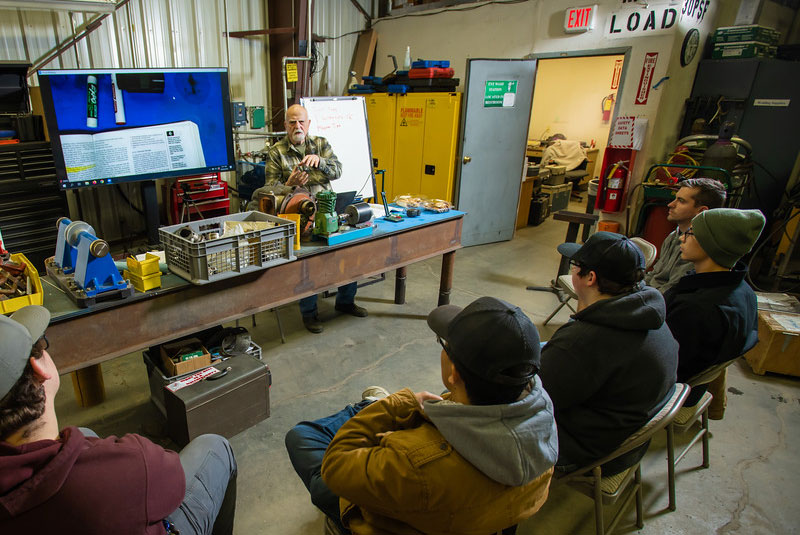Legacy in Ivory: A Son’s First Visit
by V. Heisser |
Brian Kulik, also known as Kavasiluk, recently visited PWSC’s Maxine & Jesse Whitney
Museum. It was his first time seeing the ivory carvings created by his father, Paul
Kulik, on display.
Maxine Whitney purchased the pieces decades ago, and they are now part of one of the world’s largest collections of Native Alaskan art and artifacts.
Brian shared the story of his father, a German-Polish migrant who arrived in Alaska in 1968 aboard the U.S. Coast Guard ship Northwind. As an electrician and radar technician, Paul participated in a historic mission to help guide the SS Manhattan through the Northwest Passage—an early attempt to transport oil across the Arctic before the Trans-Alaska Pipeline was built. During a brief shore leave, he met Brian’s mother, Maria Koezuna, an Inupiaq woman from King Island. The two later married and settled in Fairbanks, Alaska.
When steady work in his trade became hard to find, Paul turned to carving, learning the craft from his brothers-in-law. He traded a buck knife for a small piece of ivory, borrowed power tools, and began carving at the kitchen table. His earliest pieces sold quickly, earning him more in a few hours than he typically made in a week. One of his first patrons was Maxine Whitney.
Maxine began collecting Native Alaskan art in 1947, purchasing directly from artists for her gift shop. She later owned the Eskimo Museum in Fairbanks, Alaska, and continued collecting until the mid-1980s. In 1998, she donated her collection to Prince William Sound Community College.
Today, the Maxine & Jesse Whitney Museum honors Alaska’s cultural heritage. For Brian, visiting the museum was a meaningful reflection on family, resilience, and his father’s enduring legacy in Alaska’s artistic landscape.
Maxine Whitney purchased the pieces decades ago, and they are now part of one of the world’s largest collections of Native Alaskan art and artifacts.
Brian shared the story of his father, a German-Polish migrant who arrived in Alaska in 1968 aboard the U.S. Coast Guard ship Northwind. As an electrician and radar technician, Paul participated in a historic mission to help guide the SS Manhattan through the Northwest Passage—an early attempt to transport oil across the Arctic before the Trans-Alaska Pipeline was built. During a brief shore leave, he met Brian’s mother, Maria Koezuna, an Inupiaq woman from King Island. The two later married and settled in Fairbanks, Alaska.
When steady work in his trade became hard to find, Paul turned to carving, learning the craft from his brothers-in-law. He traded a buck knife for a small piece of ivory, borrowed power tools, and began carving at the kitchen table. His earliest pieces sold quickly, earning him more in a few hours than he typically made in a week. One of his first patrons was Maxine Whitney.
Maxine began collecting Native Alaskan art in 1947, purchasing directly from artists for her gift shop. She later owned the Eskimo Museum in Fairbanks, Alaska, and continued collecting until the mid-1980s. In 1998, she donated her collection to Prince William Sound Community College.
Today, the Maxine & Jesse Whitney Museum honors Alaska’s cultural heritage. For Brian, visiting the museum was a meaningful reflection on family, resilience, and his father’s enduring legacy in Alaska’s artistic landscape.









